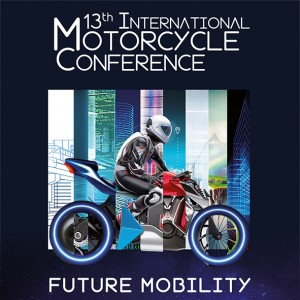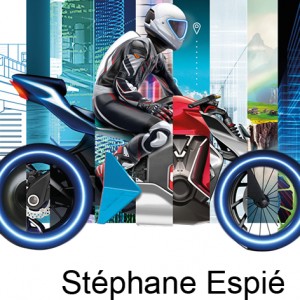Discussion on Session 3 „ARAS I“

PAPER
Question
Visual, acoustic and haptic warning solutions are discussed in the research literature. Is there already a tendency which sensor group is likely to prevail?
Answer by Alessio Sevarin
I do not think that an information channel can really prevail. I see the most advantages in the combination of different information channels to provide an easy to understand and not-annoying feedback. This trend is already used in four-wheelers and I am looking forward to seeing it also in two-wheelers.
Question
Vibrating gas grip, vibrating glove and vibrating wristband are cited as haptic solutions. What about a vibrating bench? Are there any findings on this?
Answer by Alessio Sevarin
Yes! A vibrating seat was considered as a haptic concept in the EU project Saferider. You can find more information in the publication“ SAFERIDER HMI strategies for motorcycles‘ ARAS and OBIS“ by the authors F. Diederichs, M. Ganzhorn, H. Widlroither and E. Bekiaris.
Question
Even though the test persons had shown themselves to be skeptical: Would acoustic solutions not be preferable? Speakers are often already integrated into helmets. They could transmit a wide repertoire of not only sound signals but also specified voice announcements, traffic radio, „Beware of slippery roads ahead!
Answer by Alessio Sevarin
Acoustic solutions are often defined by motorcyclists as non-pleasant. This can be the consequence of the experience with such warnings in four-wheelers. Nevertheless, they were compared with classical head-down displays in different studies, showing a reduction of the physical and mental activity, for example in the case of navigation tasks.
Therefore I would imagine that also in case of hazard warning they would be a feasible solution. Acoustic solutions have for sure an advantage in terms of the detail of the information to transmit but can not achieve the same speed of information transmission and reaction as a haptic solution.

PAPER
Question
Have tests been carried out at higher speeds or is there practical experience of how riders behave at higher speeds?
Answer by Cosimo Lucci
In this study the automatic braking events were deployed at velocities which are typical in urban scenarios (30-50 km/h). These velocities were showed to be the most relevant for MAEB in terms of potential benefits and effectiveness of the system. In fact, at higher velocities, an avoidance manoeuvre rather than a braking action is effective to avoid crashes. Moreover, testing higher velocities requires a different test protocol and a very wide test area. However, manoeuvring a motorcycle (e.g. performing a swerve manoeuvre) at higher speed requires the rider to perform higher forces on the handlebar, therefore we can presume that also the MAEB intervention could be harder to be managed. Even if during the set-up of the test protocol some exploratory tests were conducted not involving participants at higher velocities, any result about rider behaviour can be derived from these pilot tests.
Question
How does it behave when MAEB works with higher decelerations than 3 m/s2 and 5 m/s2, for example in case of sudden emergency braking (say 8 m/s2)?
Answer by Cosimo Lucci
In this study were tested automatic braking interventions, as pseudo-unexpected activations, with a level of deceleration of 3 m/s2 and 5 m/s2. Moreover, during the familiarization with the automatic braking system, the participants tested also one declared automatic braking intervention in straight-line with a level of deceleration of 6 m/s2. From the results of this study, we can guess that if the rider is conscious of the intervention of MAEB, even higher levels of deceleration can be managed by riders, but these values were not tested with participants in this study.
Question
Theoretically, there will probably be a functional limit from which the intensity of a MAEB intervention will only be perceived or processed by trained and experienced riders without any problems or stress (without fright). Have such limits ever been explored in practice?
Answer by Cosimo Lucci
If I understood correctly the question, which was whether or not there is a theoretical limit about even experienced or trained riders would be frighted by the MAEB activation, I can say that if this limit exists, it is certainly over 5 m/s2. This is because any of the participants involved in these tests, even the less experienced ones, reported being frightened by the intervention of automatic braking. However, this limit could be connected not only with the level of experience or training but also to other subjective/personal factors.
Question
What does it actually look like on the „trigger“ side? Are they already reliable? (Question about the time horizon, how long will it take until MAEB is introduced).
Answer by Cosimo Lucci
From the point of view of the obstacle detection, some technologies capable to detect the obstacles and trigger MAEB are already available for certain simple scenarios (e.g. rear-end crashes) which were showed to be relevant for motorcycle crashes. However, there are some studies which underlined that there are also other crash scenarios which are very relevant for motorcycle crashes and users’ injuries, in which MAEB could bring valuable benefits. Therefore, an open technological challenge is to develop an obstacle detection technology capable to correctly trigger MAEB in complex crash scenarios.


